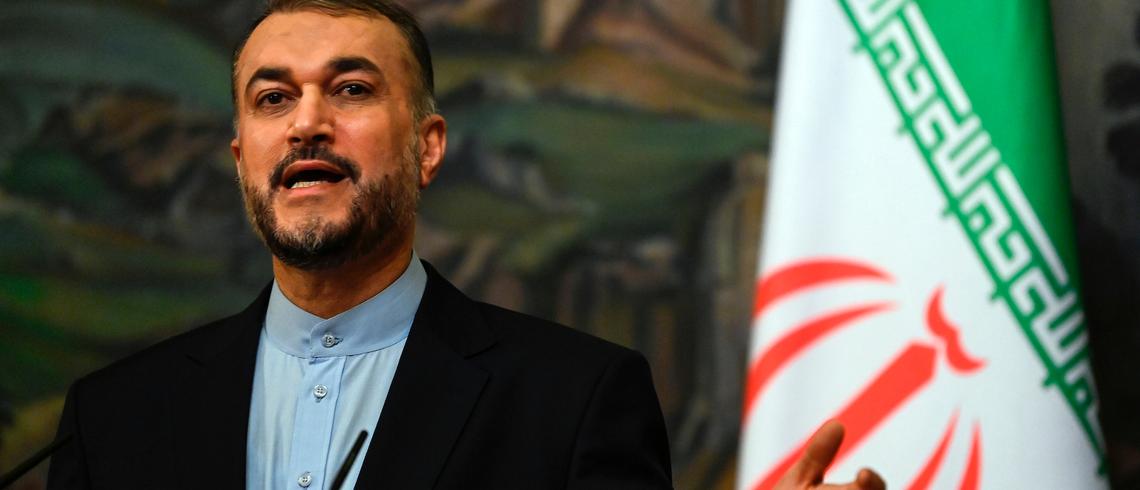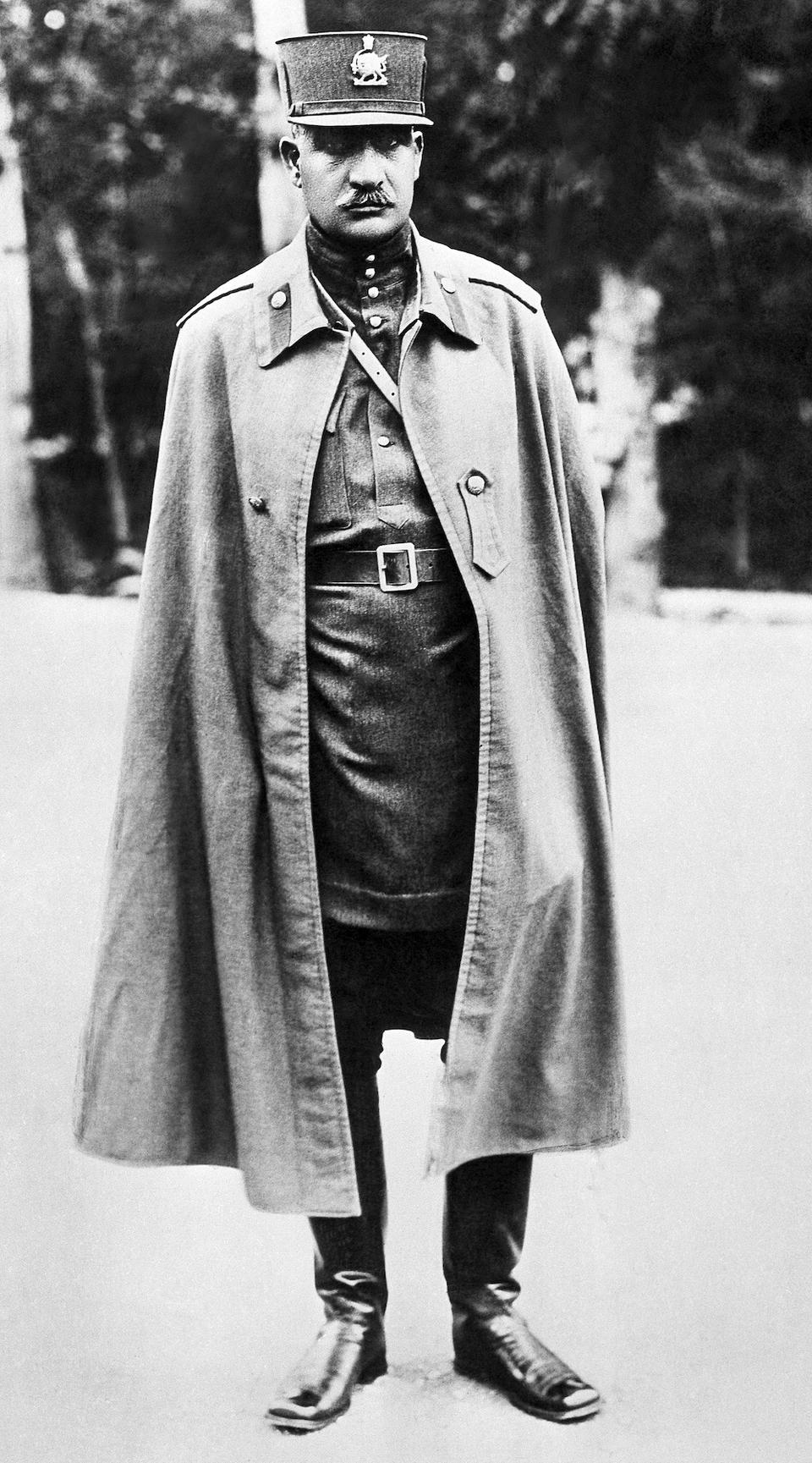
Anti-necktie sentiment in Iran stems from the 1979 revolution, when the accessory was denounced as a symbol of Western cultural oppression.
The ubiquitous necktie, a garment that became part of the standard business attire worn across the globe, can enliven an otherwise dull suit or ceremoniously flaunt one’s status.
The fabric has also been swept up in recent cultural shifts. In Silicon Valley and the 21st century tech world, suits and ties are popularly discarded for jeans and t-shirts. “Casual Fridays” have largely permeated corporate workplaces.
However, choosing to wear an otherwise innocuous necktie can be a risky proposition in one country: the Islamic Republic of Iran.
Iran’s clerical establishment – headed by Ayatollah Khomeini – had banned the sale of ties following the Islamic Revolution in 1979, regarding the textile as a symbol of Western culture.

For Iran’s new ruling class, neckties (as well as bowties) were considered decadent and un-Islamic “symbols of the Cross,” a sartorial marker of Western subjugation under the rule of the secular Pahlavi monarchy.
It is why every Iranian official, government worker and head of state since then, even when donning a suit, leave their collars exposed.
Although legally prohibited, the ruling is rarely enforced with any consistency over the years, outside of the religious police doing so with irregular zeal.
Under the government of reformist president Mohammad Khatami, when many previous restrictions were more relaxed, ties were being sold in boutiques in major cities across the country.

While there is a ban on selling them, wearing neckties is not a punishable offence. Many Iranian men can be seen dressing with ties in different settings, whether it’s in universities or at weddings, or those working in the private sector.
That same discretion is not extended to women, as the regime enforces a strict dress code where women must wear hijabs in public, while the authorities police anyone with loose headscarves, inappropriate clothing or hairstyles.
To understand why that’s the case, it is important to underscore the extent to which dress was politicised in pre-revolution Iran as part of its nation-building project.
Sartorial regulation
Under the despotic reign of Reza Shah Pahlavi (1925-1941), Iran embarked on a course of modernisation where the state promulgated laws that had a deep, and at times traumatising, effect on everyday Iranians.
Following the lead of newly republican Turkey – but unlike any other Muslim government in the Arab world or in Asia – the Iranian regime sought to “Europeanise” the appearance of its people through draconian dress policies.
While the wearing of European suits and ties started to spread from the ranks of the elite and aristocracy to the educated urban parts of the country, a uniform dress code was passed into law in 1928 mandating all public servants except religious leaders to wear Western attire. Later in 1935, a decree made it obligatory for state employees to wear fedoras.
The Shah then proceeded to carry out his most unpopular reform: the banning of the veil in 1936. To enforce the policy, local authorities around the country were instructed to arrest and punish anyone who protested and prevent veiled women from participating in public life.
While the new policies were met with middle class approval in urban centres like Tehran, they were far from popular in the provinces and among the working class, and the dress codes would give rise to considerable resistance in the proceeding years.
For the country’s Shia clergy, who had to depend on the goodwill of the state to wear their traditional garb, the irony was that “by instituting an outward distinction between laymen and ulama, the Pahlavi state unwittingly contributed to the creation of a clearly bounded clergy…a group that four decades later would preside over the dynasty’s downfall,” writes Houchang Chehabi in an article for the journal Iranian Studies.

Chehabi argues that the reason why Iran and Turkey went down a path of “sartorial social engineering” was linked to nation-building, where “Europeanization was seen as a precondition for emancipation and equality within a system of nations”. The standardisation of dress to eliminate any expression of distinction was seen as necessary to building a uniform state and strong sense of national identity.
While sartorial repression began to ease up by the 1950s, and with the reign of Mohammad Reza Shah became less direct state policy and more personal choice, the Islamic revolution of 1979 would change all that.
Yet despite the sartorial script being flipped post-revolution, Chehabi noted how officials of the current Islamic regime could no longer signify their “authenticity” in any way but in the negative.
“While at an international meeting an Arab leader may wear a jilaba and a Pakistani politician a shirvani, officials of the Islamic Republic of Iran stand out only by their refusal to wear a tie, a refusal that has more to do with revolutionary populism than with Islam.”
The irony in all of this is that the necktie might have (distant) Iranian origins.
The modern tie is descended from the cravat, which were first worn by Croatian mercenaries serving in France during the 17th century. Their knotted neckerchiefs were fashionably adopted by the French, before evolving into the necktie we know today by the time of the Industrial Revolution.
British historian Noel Malcom claims that the knotted neckerchief was worn by a tribe of Croats that originally immigrated to the Balkan region from the Iranian plateau during the Sassanid period.
Social media is bold.
Social media is young.
Social media raises questions.
Social media is not satisfied with an answer.
Social media looks at the big picture.
Social media is interested in every detail.
social media is curious.
Social media is free.
Social media is irreplaceable.
But never irrelevant.
Social media is you.
(With input from news agency language)
If you like this story, share it with a friend!
We are a non-profit organization. Help us financially to keep our journalism free from government and corporate pressure













0 Comments